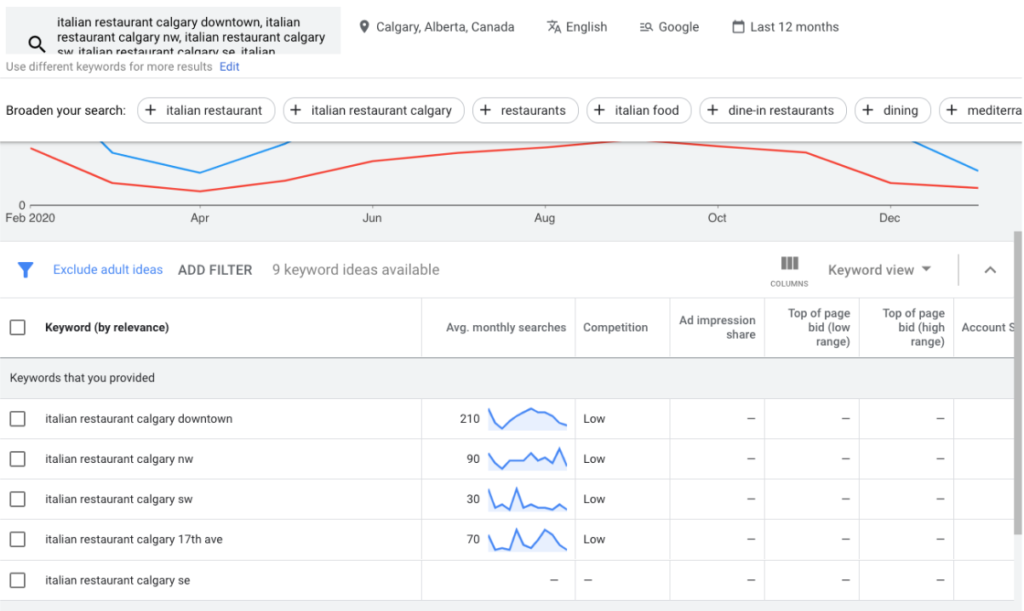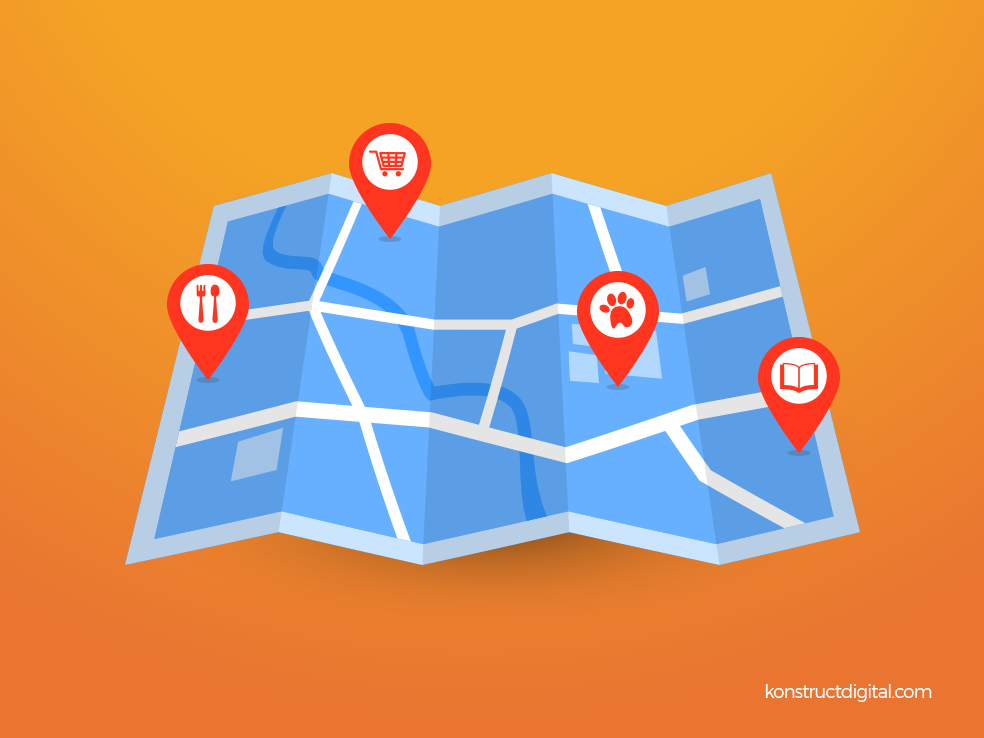Table Of Contents
- So, What Exactly is Hyperlocal SEO?
- Hyperlocal SEO vs Local SEO
- How to do Hyperlocal Keyword Research
- Strategizing Hyperlocal SEO With Google My Business
- Hyperlocal Directories and Link-Building Strategy
- How to Optimize Your Content with Hyperlocal Terms and Keywords
- How to Keep Your Website Mobile-Friendly
- Don’t Neglect Hyperlocal SEO
Are you a local business owner who struggles to compete with massive franchises and multinational companies for search visibility? Let’s face it — mom-and-pop shops probably don’t have a chance of competing for the same keywords as Walmart or McDonalds. But, don’t lose hope! There IS a secret to local business SEO success… Introducing hyperlocal SEO!
For a local business, being highly visible on a hyperlocal search engine results page (SERP) is especially important. Most often, your business relies on nearby customers Googling a quick and easily accessible solution to their problems (ie. they’re craving sushi, they need a haircut, they want to hire a dog walker — you name it!). In order to capture this kind of hyperlocal traffic, it’s essential to invest in optimizing your online presence through hyperlocal SEO.
In this ultimate hyperlocal SEO guide, we’re covering everything from the definition of hyperlocal SEO to hyperlocal keyword research, Google My Business account optimization, local directory listings, and more!
So, What Exactly is Hyperlocal Seo?

Hyperlocal SEO is a micro-level of optimization which focuses on a particular geographical area through a highly magnified lens. This level of intensity is observed down to specific localities such as neighbourhoods, blocks, and even as precisely as a particular street.
For example, if you were looking for an Italian restaurant in the neighbourhood of Inglewood in Calgary, you would likely enter “Italian restaurant Inglewood” into Google. In doing so, you would find all the Italian restaurants closest to your specific location. Your choice of Italian restaurant would be based entirely on the locality and discoverability. Hyperlocal SEO makes it much easier to target potential customers geographically because the competition is far less overwhelming.
When it comes to amplifying the traffic of customers nearby, Hyperlocal SEO is the approach you will want to take. Businesses such as local barbershops, mechanics, or restaurants serving a particular neighbourhood or street can significantly benefit from a hyperlocal SEO strategy.
The advantages of hyperlocal SEO are obvious:
- It’s easier to compete using hyperlocal search terms because the competition in a specific geographical area is significantly lower than a larger scale search.
- You gain more customers due to geographical convenience who otherwise would not have considered your business.
- Nearby customers can quickly get to your business and purchase your products or services.
Hyperlocal SEO Vs Local SEO
Before we dive deeper into Hyperlocal SEO, it’s essential that we differentiate it from local SEO. In the simplest terms, local SEO focuses on larger spectrums such as regions and cities, whereas hyperlocal SEO is extremely targeted and aims its focus towards micro segments of a city such as neighbourhoods, landmarks, streets, etc.
For example, searching for “Italian restaurant Calgary” is considered a local search but adding further detail such as “Italian restaurant Inglewood ” is what would bring this search down to the hyperlocal level.
How to Do Hyperlocal Keyword Research
In order for your local business to thrive in this digital era, it’s essential to target the right keywords. Hyperlocal keyword research is the most crucial step in winning your hyperlocal strategy – and exactly how your customers will find you.
Finding the right hyperlocal keywords for a smaller geographical area can be difficult. This section will cover everything you need to know about hyperlocal keyword research strategies for your local business.
Let’s start by taking an example of a hyperlocal targeted business. Say you have an Italian restaurant located in Calgary. For a restaurant, you would probably focus on the types of cuisine, food, or dishes that your restaurant offers. Let’s gather a few variations of keywords for Italian restaurants:
- Italian food
- Italian restaurant
- Pizza restaurant
- Pasta restaurant
- Lasagna restaurant
- Gnocchi restaurant
Now, consider what service areas your potential customers would usually search for; this list will include:
- Neighbourhood
- Street
- Suburb
- District
- Postal code
Below is an example of adding the two columns together to combine “italian restaurant” with street names like 17th ave (a well-known Calgary street), different quadrants of the city like NE, NW, SE, and SW, or even nearby landmarks such as Peace Bridge (a popular bridge in downtown Calgary).
Note: I am using Google Keyword Planner for keyword research as it is helping me target local locations like Calgary or Edmonton. This feature is not available in other tools like SEMRUSH, AHREF, etc.

To put it into perspective, think about how you would perform a search when adding keywords to location-related searches. Your customers will likely be typing something similar. Nonetheless, it’s still very important to do your research thoroughly to really understand the search activity of the majority of users.
Strategizing Hyperlocal SEO with Google My Business

When hyper-localizing your business, optimizing your Google My Business account is one of the most effective ways to increase your search visibility and maximize walk-in customers.
How to Optimize Your Google My Business Account
Adding granular location details to your optimized content is what takes your Google My Business profile from a local listing to a hyperlocal listing! This involves adding as many hyperlocal details to your descriptions as you can, by doing so your business will rank higher in hyperlocal results.
When optimizing your Google My Business profile, make sure you use a targeted keyword (example shown in the keyword research section) to write your business’s short and long description, select your business category, or add any company information. Adding relevant factors such as landmarks or nearby neighbourhoods into your business description can really help!
A key factor that affects your hyperlocal ranking is distance. Search engine signals consider how far your business is from the local search query. So, if you are a local business running multiple locations, we recommend creating landing pages for each location and then linking back to a Google My Business account for each location.
Hyperlocal Directories and Link-Building Strategy

Ready to take your hyperlocal strategy up a notch? Look for niche-specific directories specific to your neighbourhood and nearby communities. For example: If you have a business location in a neighbourhood of Calgary, get in touch with local community associations to get added to their websites. It’s a good idea to present an offer to community members when doing so.
How to Optimize Your Content with Hyperlocal Terms and Keywords
As always, content is king, and it is essential to optimize your hyperlocal SEO content. Once you have finished with your keyword research, you should create locally relevant content which will help your audience understand your business better.
When writing localized content for your business, make sure to optimize for location-based keywords like “downtown” or “Inglewood” (a downtown neighbourhood) if you want to rank higher in hyperlocal search results. You can also research that location and other neighbourhoods with local events, destinations, landmarks, or traditions.
For example, rather than keywords like “Italian restaurant Calgary,” consider a smaller geographical area, such as “Italian restaurant 17th ave” or “Italian restaurant Inglewood” which is far more relevant if your restaurant is located in either of these places.
Once you have finished selecting your hyperlocal keywords, ensure that you use these keywords in your page titles, meta descriptions, headings, body text, image alt. text and Google My Business profile to have a better chance of ranking for local search queries.
How to Keep Your Website Mobile-friendly

Now that we have covered all the aspects of hyperlocal SEO, one of the most important things that we need to consider when it comes to local search is to make sure your website or landing pages are mobile-friendly!
Before we dive into the factors of a mobile-friendly website, it is important to first discuss the trend of micro-moments. If you’ve never heard this term before, micro-moments refer to a phenomenon in which people instinctively turn to their devices to act on their needs (ex. they want to find something to do, watch, buy, learn, etc.). More and more micro-moments are now happening on smartphones, from booking an appointment for a haircut to ordering your pizza from the local restaurant. If your site is not mobile-friendly, your ranking will suffer.
In order to make your website mobile-friendly, ensure that it meets Google mobile-friendly criteria such as:
- Using readable text
- Avoiding software that is not common on mobile (ex. Flash)
- Featuring content that is compatible with a smaller mobile screen
You can check if your website is mobile-friendly by using Google’s Mobile-Friendly Test!
Don’t Neglect Hyperlocal Seo

The world of SEO is ever-evolving, and competition among businesses is exponentially rising. This fact is why it is essential to develop or adjust your hyperlocal marketing strategy to avoid getting left behind!
Hyperlocal SEO is not easy, especially when businesses need to focus on their customer experience and day-to-day operations rather than figuring out how to localize their online visibility. That’s where we come in!
If you are looking for any help with your hyperlocal SEO strategy, reach out to the SEO Specialists at Konstruct Digital today. We are industry experts and can help your local businesses explode your sales by creating and executing your hyperlocal SEO strategy. Contact us and our SEO experts will get you the results you need to grow your local search traffic AND foot traffic.
Need help with B2B SEO?
Learn more about Konstruct's B2B SEO Services
More B2B SEO Resources
- How to Select High-Impact Keywords for B2B SEO
- B2B SEO Statistics To Help You Justify Your Marketing Spend
- How to Create an SEO-Friendly Site Structure
- B2B eCommerce SEO: How to Optimize Your eCommerce Site to Attract B2B Buyers
- The Ultimate SEO Tools List (30+ Free & Paid Tools You Need!)
- SEO Competitor Analysis: What is it & How to Benefit From it
- How to do Keyword Research: A Step By Step Guide With Tools & Tips
- The Top 8 Key SEO Metrics You Need to Start Tracking Today
- Google Analytics 4: What Is It & Why You Should Be Using It
- What’s Next for the Google Algorithm? 9 SEO Experts Share their Predictions


